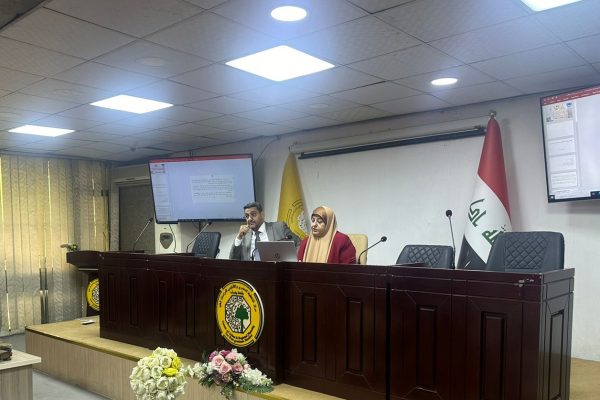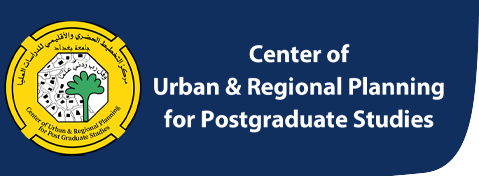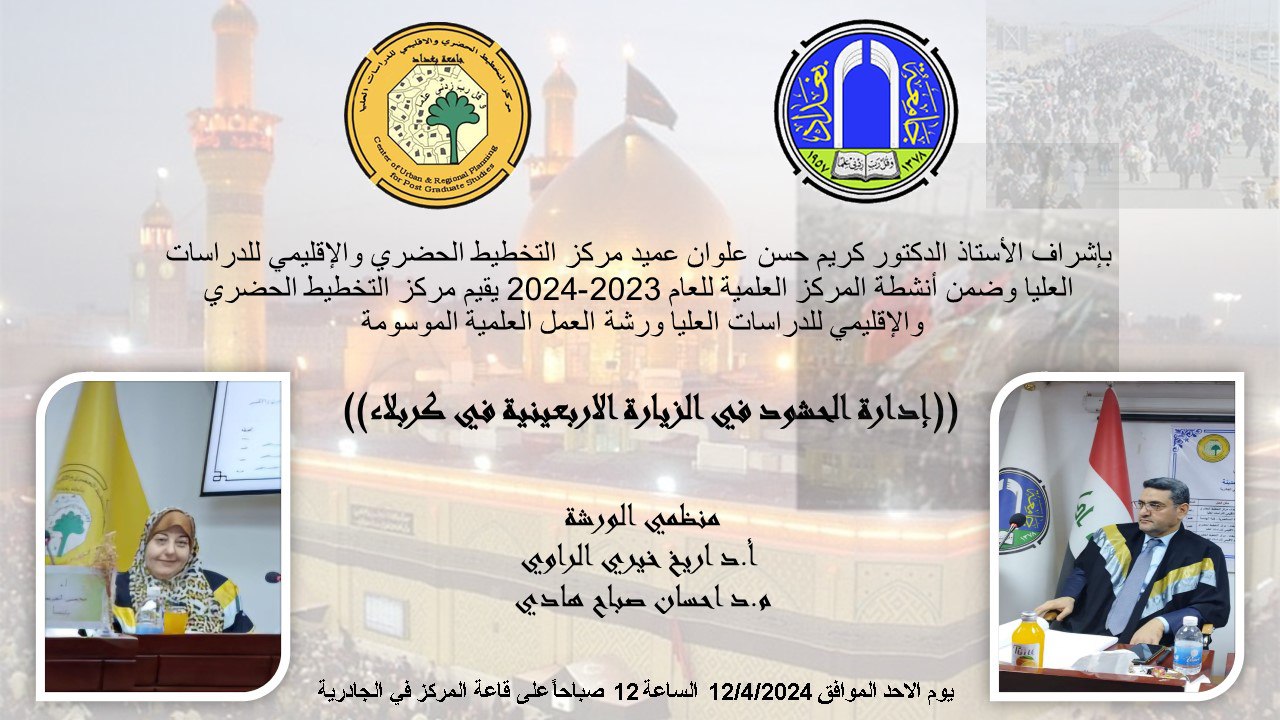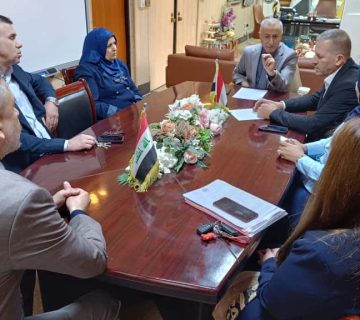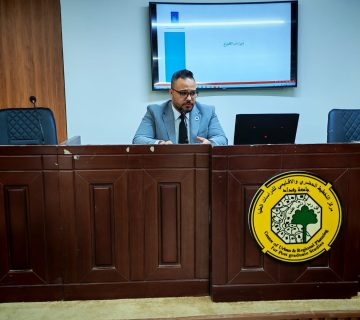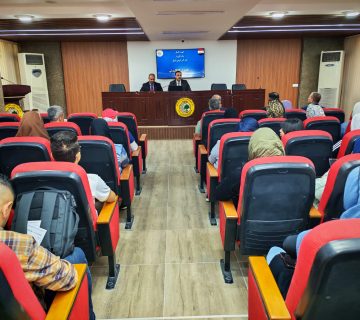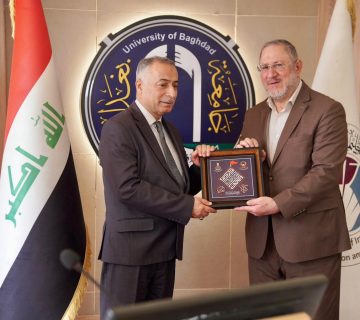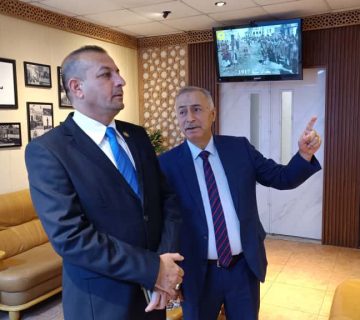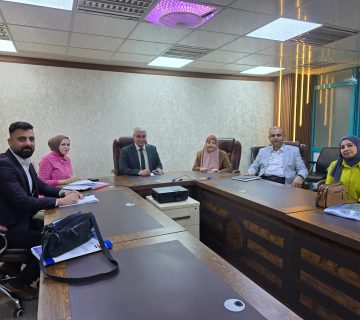The Center of Urban and Regional Planning for Postgraduate Studies at the University of Baghdad organized a scientific workshop entitled (Crowd Management in the Arbaeen Commemoration to Karbala) in the presence of a group of the Center’s teachers, employees, and postgraduate students.
The workshop aimed to study the area of the city of Karbala and the extent to which it accommodated the crowds of visitors coming to it from inside and outside Iraq during the Arbaeen commemoration of Imam Hussein (peace be upon him). The teacher at the center, Professor Dr. Areej Al-Rawi, presented the workshop with her research entitled (Organizing the Distribution of Means of Transportation in the city of Karbala during the Arbaeen commemoration). She discussed the organization of transportation, reviewing the number of visits and visitors and a map of land uses in the city, after dividing the city into 4 sectors, evaluating the movement of vehicles and pedestrians on the street network and then comparing it to the level of the condition of the standard streets.. The research concluded that all the streets were crowded with vehicles and pedestrians, and thus Al-Rawi presented her recommendation on the necessity of using public transportation and preparing its own parking lots and others designated for private vehicles.
While the second research by teacher Dr. Ihsan Sabah Hadi, titled (Multi-functional urban space and its role in meeting the requirements of visitors to the Arbaeen of Imam Hussein “peace be upon him” in the center of the holy city of Karbala), addressed the importance of the city of Karbala as it is one of the most important religious cities that Muslims from different countries of the world are keen on. It is necessary to visit it annually, after the number of visitors in 2014 reached about 21 million visitors, as it is necessary to take into account their requirements and provide services to them in light of the small area of the city center of Karbala, amounting to 75.67 hectares, which accommodates less than 40 thousand people. Therefore, practical and sustainable solutions must be found to provide these requirements without the need to build new service structures in the movement axes that cause a lack of space needed for walking and crowding that hinders movement, through the premise of adopting a multi-functional urban space and identifying the entities responsible for its management to provide the necessary services to visitors.
The workshop also presented various opinions from the specialized attendees, focusing on adopting new ways for visitors to enter and exit from other ways and with a complete flow that accommodates these crowds, provided that regular mass transportation is adopted.
